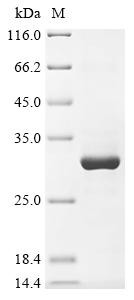Cookie-Einstellungen
Diese Website benutzt Cookies, die für den technischen Betrieb der Website erforderlich sind und stets gesetzt werden. Andere Cookies, die den Komfort bei Benutzung dieser Website erhöhen, der Direktwerbung dienen oder die Interaktion mit anderen Websites und sozialen Netzwerken vereinfachen sollen, werden nur mit Ihrer Zustimmung gesetzt.
Konfiguration
Technisch erforderlich
Diese Cookies sind für die Grundfunktionen des Shops notwendig.
"Alle Cookies ablehnen" Cookie
"Alle Cookies annehmen" Cookie
Ausgewählter Shop
CSRF-Token
Cookie-Einstellungen
FACT-Finder Tracking
Individuelle Preise
Kundenspezifisches Caching
Session
Währungswechsel
Komfortfunktionen
Diese Cookies werden genutzt um das Einkaufserlebnis noch ansprechender zu gestalten, beispielsweise für die Wiedererkennung des Besuchers.
Facebook-Seite in der rechten Blog - Sidebar anzeigen
Merkzettel
Statistik & Tracking
Endgeräteerkennung
Kauf- und Surfverhalten mit Google Tag Manager
Partnerprogramm

Bei Fragen nutzen Sie gerne unser Kontaktformular.
Bestellen Sie auch per E-Mail: info@biomol.com
Größere Menge gewünscht? Bulk-Anfrage
Bestellen Sie auch per E-Mail: info@biomol.com
Größere Menge gewünscht? Bulk-Anfrage
Organism: Rattus norvegicus (Rat). Source: E.coli. Expression Region: 960-1125aa. Protein Length:... mehr
Produktinformationen "Transient receptor potential cation channel subfamily A member 1 (Trpa1), partial, rat, recombinant"
Organism: Rattus norvegicus (Rat). Source: E.coli. Expression Region: 960-1125aa. Protein Length: Partial. Tag Info: N-terminal 10xHis-tagged and C-terminal Myc-tagged. Target Protein Sequence: IGLAVGDIAE VQKHASLKRI AMQVELHTNL EKKLPFWYLR KVDQRSTIVY PNRPRHGRML RFFHYFLSMQ ETRQEAPNID TCLEMEILKQ KYRLKDLTSL LEKQHELIKL IIQKMEIISE TEDEDNHCSF QDRFKKERLE QMHSKWNFVL NAVKTKTHCS ISHPDI. Purity: Greater than 85% as determined by SDS-PAGE. Endotoxin: Not test. Biological Activity: n/a. Form: Liquid or Lyophilized powder. Buffer: If the delivery form is liquid, the default storage buffer is Tris/PBS-based buffer, 5%-50% glycerol. If the delivery form is lyophilized powder, the buffer before lyophilization is Tris/PBS-based buffer, 6% Trehalose, pH 8.0. Reconstitution: We recommend that this vial be briefly centrifuged prior to opening to bring the contents to the bottom. Please reconstitute protein in deionized sterile water to a concentration of 0.1-1.0 mg/mL.We recommend to add 5-50% of glycerol (final concentration) and aliquot for long-term storage at -20 °C/-80 °C. Our default final concentration of glycerol is 50%. Customers could use it as reference. Storage: The shelf life is related to many factors, storage state, buffer ingredients, storage temperature and the stability of the protein itself. Generally, the shelf life of liquid form is 6 months at -20 °C/-80 °C. The shelf life of lyophilized form is 12 months at -20 °C/-80 °C. Notes: Repeated freezing and thawing is not recommended. Store working aliquots at 4 °C for up to one week. Relevance: Receptor-activated non-selective cation channel involved in pain detection and possibly also in cold perception, oxygen concentration perception, cough, itch, and inner ear function. Shows 8-fold preference for divalent over monovalent cations. Has a central role in the pain response to endogenous inflammatory mediators and to a diverse array of irritants, such as allylthiocyanate (AITC) found in mustard oil or wasabi, cinnamaldehyde, diallyl disulfide (DADS) from garlic, and acrolein, an irritant from tears gas and vehicle exhaust fumes. Acts also as an ionotropic cannabinoid receptor by being activated by delta(9)-tetrahydrocannabinol (THC), the psychoactive component of marijuana. Is activated by a large variety of structurally unrelated electrophilic and non-electrophilic chemical compounds. Electrophilic ligands activate TRPA1 by interacting with critical N-terminal Cys residues in a covalent manner, whereas mechanisms of non-electrophilic ligands are not well determined. May be a component for the mechanosensitive transduction channel of hair cells in inner ear, thereby participating in the perception of sounds. Probably operated by a phosphatidylinositol second messenger system. Reference: "Selective blockade of TRPA1 channel attenuates pathological pain without altering noxious cold sensation or body temperature regulation." Chen J., Joshi S.K., DiDomenico S., Perner R.J., Mikusa J.P., Gauvin D.M., Segreti J.A., Han P., Zhang X.F., Niforatos W., Bianchi B.R., Baker S.J., Zhong C., Simler G.H., McDonald H.A., Schmidt R.G., McGaraughty S.P., Chu K.L. Kym P.R. Pain 152:1165-1172(2011). Function: nan
| Schlagworte: | Trpa1, Anktm1, Wasabi receptor, Ankyrin-like with transmembrane domains protein 1, Transient receptor potential cation channel subfamily A member 1, Recombinant Rat Transient receptor potential cation channel subfamily A member 1 (Trpa1), partial |
| Hersteller: | Cusabio |
| Hersteller-Nr: | EP764869RA |
Eigenschaften
| Anwendung: | Activity not tested |
| Konjugat: | No |
| Wirt: | E.coli |
| Spezies-Reaktivität: | rat |
| MW: | 27.3 kD |
| Reinheit: | >85% (SDS-PAGE) |
Datenbank Information
| KEGG ID : | K04984 | Passende Produkte |
| UniProt ID : | Q6RI86 | Passende Produkte |
| Gene ID : | GeneID 312896 | Passende Produkte |
Handhabung & Sicherheit
| Lagerung: | -20°C |
| Versand: | +4°C (International: +4°C) |
Achtung
Nur für Forschungszwecke und Laboruntersuchungen: Nicht für die Anwendung im oder am Menschen!
Nur für Forschungszwecke und Laboruntersuchungen: Nicht für die Anwendung im oder am Menschen!
Hier kriegen Sie ein Zertifikat
Loggen Sie sich ein oder registrieren Sie sich, um Analysenzertifikate anzufordern.
Bewertungen lesen, schreiben und diskutieren... mehr
Kundenbewertungen für "Transient receptor potential cation channel subfamily A member 1 (Trpa1), partial, rat, recombinant"
Bewertung schreiben
Loggen Sie sich ein oder registrieren Sie sich, um eine Produktbewertung abzugeben.
Zuletzt angesehen

